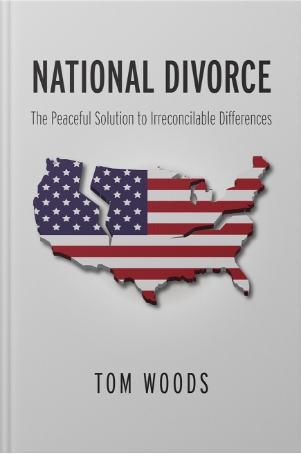The latest issue of the Tom Woods Letter, which all the influential people read. Subscribe for free and receive my eBook The Deregulation Bogeyman as a gift.
Good old Twitter. Whenever I’m unsure what to write about, a fellow like this comes along:

Let’s start at the beginning.
“Many kids would be undereducated.”
Many kids are undereducated right now, with largely state provision of education. I discussed this with Bryan Caplan. If the private sector had done such a poor job of educating people that adults cannot answer even half the questions on a test covering the most basic concepts in science, government, and history, we’d never hear the end of it.
But when the state does it, the results are simply ignored and we’re all lectured about how awful things would be without the state.
He neglects to mention what to me is one of the most extraordinary stories in recent times, and which I’ve covered on the Tom Woods Show: James Tooley’s work on low-cost private schools in the developing world, a phenomenon that had existed under the radar for many years.
In some of the poorest parts of the world, private schools are educating more children than the public schools, at lower cost and with better results.
If I were looking for a single-sentence refutation of this Tweet, I don’t think I could do a better job than that one.
“Foreign policy would be massively under resourced.”
That one is just crazy: I think things would be a lot better if the U.S. government’s foreign policy had been massively “under resourced” since 2001. As it is, it was “massively resourced,” and those resources went down one sinkhole after another, taking countless lives with them.
To look at that record and be worried that not enough neoconservative foreign policy would be able to occur — I just can’t fathom that.
Infrastructure is too big a topic to tackle here, but how can he know what infrastructure projects are worth the cost in terms of foregone opportunities? All of them? Some? Which ones?
Without economic calculation or a functioning market, all of these projects are arbitrary from the point of view of consumer welfare. And yes, private providers can create these things (see episodes 802 and 316 of the Tom Woods Show for more).
In a later Tweet our friend mentions affirmative action as something the downtrodden cannot live without.
Here I call Thomas Sowell into service.
Sowell notes that champions of the Official Version of History ignore already existing trends in black employment, well under way long before the enactment of the Civil Rights Act of 1964, from which we are taught all blessings flowed.
Writes Sowell: “In the period from 1954 to 1964, for example, the number of blacks in professional, technical, and similar high-level positions more than doubled. In other kinds of occupations, the advance of blacks was even greater during the 1940s — when there was little or no civil rights policy — than during the 1950s when the civil rights revolution was in its heyday.
“The rise in the number of blacks in professional and technical occupations in the two years from 1964 to 1966 (after the Civil Rights Act) was in fact less than in the one year from 1961 to 1962 (before the Civil Rights Act). If one takes into account the growing black population by looking at percentages instead of absolute numbers, it becomes even clearer that the Civil Rights Act of 1964 represented no acceleration in trends that had been going on for many years. The percentage of employed blacks who were managers and administrators was the same in 1967 as in 1964 — and 1960. Nor did the institution of ‘goals and timetables’ at the end of 1971 mark any acceleration in the long trend of rising black representation in these occupations. True, there was an appreciable increase in the percentage of blacks in professional and technical fields from 1971 to 1972, but almost entirely offset by a reduction in the percentage of blacks who were managers and administrators.”
Sowell further notes that Asians and Hispanics show similar long-term upward trends that had begun years before the passage of the 1964 Act, and which were not accelerated either by the Act itself or by the “affirmative action” programs that (inevitably) followed.
Mexican-Americans’ incomes rose in relation to those of whites between 1959 and 1969, but not at a greater rate than between 1949 and 1959. Chinese and Japanese-American households had matched their white counterparts in income by 1959 and were earning one-third more by 1969.
That’s enough for one Tweet.
Over the weekend my kids and I got out some puppets and reenacted the incident with the Covington high school students and the Native Americans at the March for Life, so that even a media personality can understand it. We made it in about five minutes, so it won’t win an Oscar, but it makes the point:







